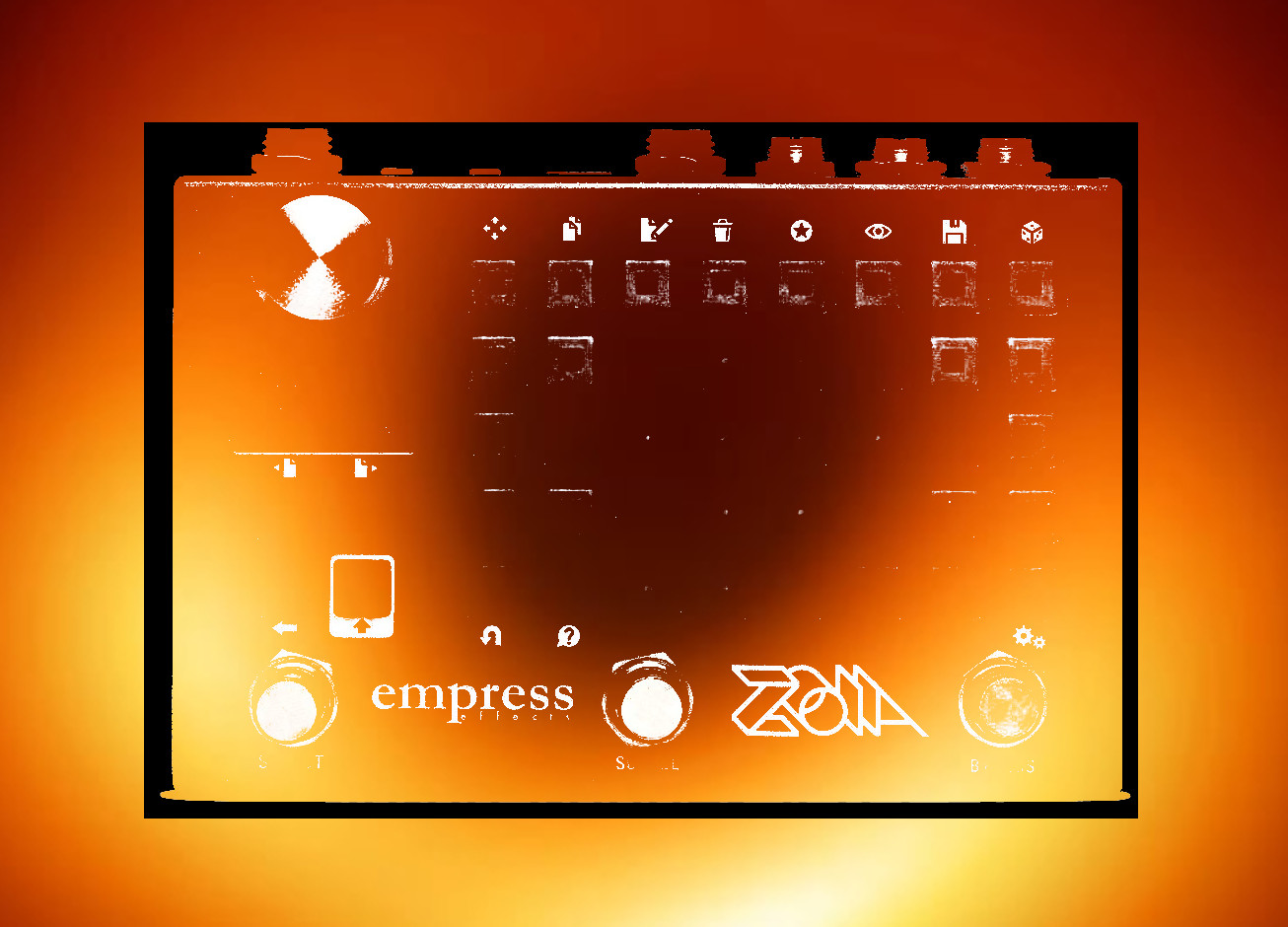Noise arts — a versatile noise source/sound design tool
Noise arts is the result of indecision. I’ve spent a while pondering different noise sources in the eurorack market. It seems easy, but some are too simple, some too complex, some don’t have the sounds I wanted.
So I decided to make my own. It’s not my idea of a perfect, all-encompassing noise source, but I wanted something that felt performative and was good for adding texture/depth to things — something that could sit in the background just for “vibe” or something that could be a more prominent sound source in a composition.
Interface is key here: there are four “noise bands” (noise passing through low-pass filters for two of the bands and band-pass filters for the other two bands), that you can control the amplitude of with virtual “FADERS.” There are also four click/pop/geiger counter channels, that you can control the density of with another set of “faders.” These faders consume the entirety of the first page.
The faders have some advantages and disadvantages. Advantage, fun and easy. Disadvantage, not great resolution (you essentially have four levels, along with off, for each noise source). I chose fun and easy in this case.
On the second page, you will find some additional controls for the noise sources.
As I mentioned above, the noise bands are made up of noise passing through filters, with the faders controlling their amplitude. The first two pass through low-pass filters, the second two pass through band-pass filters. You can control their FREQUENCY and their Q. In the case of the band-pass filters, as Q increases, the band narrows, which will affect the gain of that particular band (although it will grow louder at the cutoff frequency). The noise passes through an aliaser before reaching the filters, and you can control the ALIASER FREQUENCY for each band. Turning it down will add a “lo-fi” quality to the sound; as you continue to turn it down, the bands will take on a more textural element, becoming somewhat like the clicks and pops on the other channels.
There is also a control for the NOISE (band) LEVEL, as well as the SLEW, which governs how quickly the virtual faders slide from one position to another.
The clicks and pops are a little more diverse in construction. In each case, the probability is controlled by a random module running into a comparator, with the fader controlling the negative input of the comparator. When the random module drops below that negative threshold, the comparator goes high and triggers a VCA to allow sound to pass. Because this happens very quickly, we get clicks and pops as just a sliver of sound makes it through before being unceremoniously cut off. Once again, each noise source has control over the FILTER FREQUENCY and Q, but the additional control is different, depending on which source you’re using.
The first two click/pop generators use a sawtooth oscillator passing into a low-pass filter. We also get control over the OSCILLATOR FREQUENCY, which can go into negative frequencies. Depending on where the oscillator frequency is relative to the filter frequency, we can get changes both in the amplitude of the clicks/pops as well as the timbre. Negative frequencies will also have an affect on the density/frequency of the clicks and pops.
The second two click/pop generators use noise as the source. The first passes through a low-pass filter; the second through a band-pass filter. The difference for these generators is that they can trigger an attack/decay envelope, instead of just triggering the VCA. You have control over the ENVELOPE LENGTH then, with shorter envelopes resembling the clicks and pops of the other two channels, while longer envelopes introduce percussive sounds or wooshes.
There is also a control for the CLICK LEVEL, as well as a DENSITY SCALAR for determining the maximum density of clicks/pops.
The noise bands pass through a compressor, side-chained by the clicks/pops. This was intended to provide a better mix between the two sources, as well as adding some “movement” to the noise bands. The sidechain input comes before the click level control, so you can turn down the output of the clicks all the way and still have them side-chain the noise bands. The compressor has the usual controls: ATTACK, RELEASE, THRESHOLD and RATIO. If you want to turn off the side-chaining, just raise the threshold until it no longer occurs.
There are also CV inputs to control the amplitude of each noise band. These CV INPUTS are set to a 0-5V range by default, but you can change them to whatever suits your CV source. Each input has an ATTENUVERTER, located on the bottom row of the second page.
The patch passes audio in stereo. The output of the noise sources is dual mono (the same sound is reproduced at both outputs).


